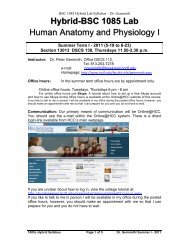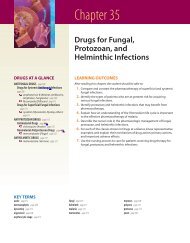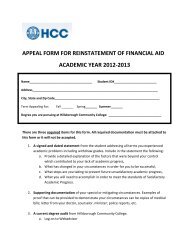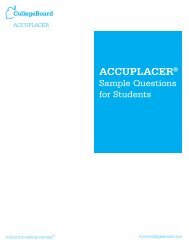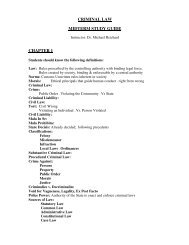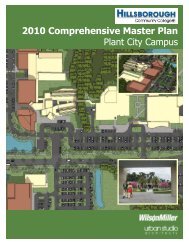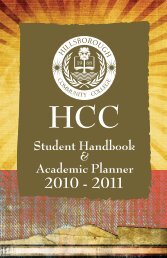SouthShore - Hillsborough Community College
SouthShore - Hillsborough Community College
SouthShore - Hillsborough Community College
Create successful ePaper yourself
Turn your PDF publications into a flip-book with our unique Google optimized e-Paper software.
INNOVATION & DESIGN PROCESS<br />
44. Innovation in Design: Reduce Waste Conveyance by<br />
Water by 100%<br />
The need for utility-treated water in sewage conveyance has been totally eliminated.<br />
Through the use of low flow and dual flush water closets and urinals, total<br />
wastewater demand is reduced. A rainwater collection system allows treated/<br />
filtered on-site collected water to make up 100% of the conveyance needs for the<br />
building.<br />
45. Reduce Water Use in Showers, Lavatories, Mop Sinks &<br />
Kitchen by 40%<br />
The building uses low flow water closets, urinals, showers and sink fixtures. Uses<br />
on-site water collection for sewage conveyance fixtures. The total water savings<br />
is 80% over baseline.<br />
46. Ecological Water Treatment Train for Water<br />
Management System<br />
The project site was designed to provide a stormwater conveyance system based<br />
on hydrologic and ecological principles of natural systems. A treatment train<br />
approach provides for movement of stormwater through a vegetated system of<br />
swales, ponds and created wetlands. The end result is improved water quality<br />
beyond that mandated by regulatory stormwater approaches or LEED stormwater<br />
credits. Florida has some of the most progressive stormwater quality rules in the<br />
nation. The LEED credit requirements for stormwater quality can easily be met<br />
with a conventionally designed stormwater pond using biological assimilation.<br />
This project goes beyond these minimum requirements to create a bold and robust<br />
natural treatment system. Currently this innovative approach is not counted<br />
toward meeting state water quality standards. Attaining LEED credits for this<br />
methodology will encourage more developers as well as regulatory agencies to<br />
consider this technology in the future.<br />
47. Experiencing Sustainability<br />
The intent is to illustrate the how and why a sustainable environment is vital to its<br />
users. The guidebook, directory and tours reinforce the culture of sustainability.<br />
The approach is to enlighten through the culture of the educational environment.<br />
Exposing the occupants to the building and environment is only half the picture;<br />
education is primarily through the keyed directory, expanded information brochure<br />
and guided tours to explain the intent of this built environment.<br />
48. LEED Accredited Professional<br />
The intent is to support and encourage the design integration required by a<br />
LEED-NC (New Construction) green building project and to streamline the application<br />
and certification process. At least one principal participant of the project<br />
team shall be a LEED Accredited Professional (AP). There were multiple LEED<br />
Accredited Professionals involved with the design of this project.<br />
HILLSBOROUGH COMMUNITY COLLEGE • SOUTHSHORE 9




